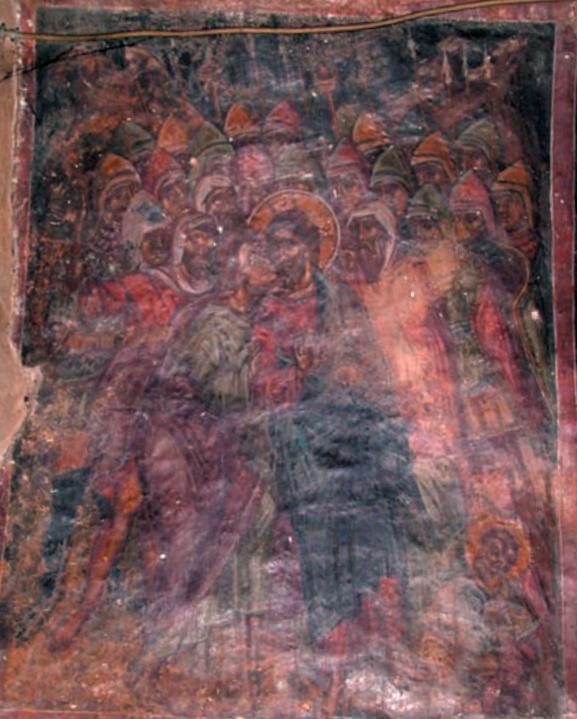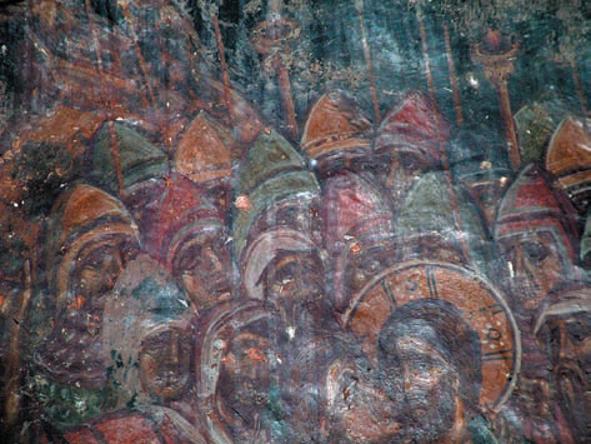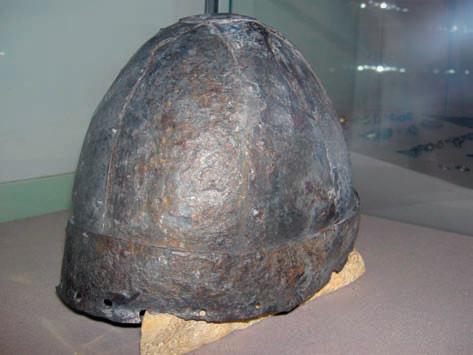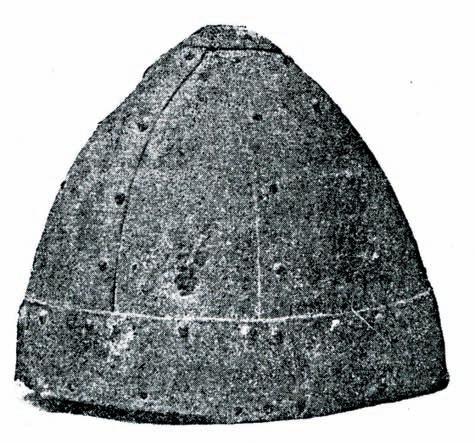The Betrayal, Mural in Aghios Georgios, Missolourgaki, Crete, 1401AD

Fig. 48. The Betrayal, Church of Aghios Georgios in Missolourgaki, 1401 AD, author’s photo

Fig. 49. The Betrayal, Church of Aghios Georgios in Missolourgaki, 1401 AD, detail, author’s photo

Fig. 50. Helmet from the fortress of Veliko Tarnovo, 14th c. AD, courtesy photo Dr. Stanimir Dimitrov

Fig. 51. Helmet from the fortress of Asenova Krepost, 14th c. AD, ex Cončev.
The Church of Aghios Georgios in Missolourgaki (1401 AD)72 introduces us into the Betrayal’s scenes of the 15th c. (Fig. 48):
but here the mass of men-at-arms is undoubtedly that of a small army of regular soldiers.
Their helmets, of segmented construction (Fig. 49), find good parallels with archaeological specimens found inside “Romania,” such as the helmet from Veliko Tarnovo (Fig. 50)
or the Byzantine-Bulgarian helmet from the fortress of Asenova Krepost, today preserved in the Historical Museum of Kazanlik (Fig. 51).
72 Spatharakis I. Byzantine Wall-Paintings in Rethymnon, Rethymnon, 1998, pp. 52–54.
Source: p91, Raffaele d'Amato The Betrayal: Military Iconography and Archaeology In The Byzantine Paintings Of The 11th-15th C. AD Representing The Arrest Of Our Lord
See also The Betrayal, Mural in Agios Georgios, Artos, Crete, c.1401AD
Illustrations of Byzantine Costume and Soldiers




